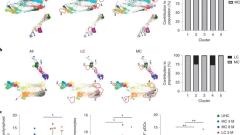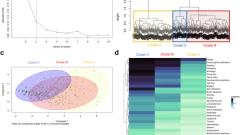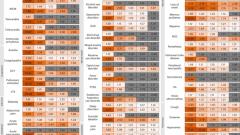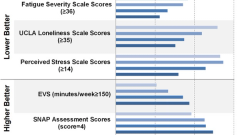ABSTRACT
Background
Internal tremors and vibrations are symptoms previously described as part of neurologic disorders but not fully described as a part of long COVID. This study compared pre-pandemic comorbidities, new-onset conditions, and long COVID symptoms between people with internal tremors and vibrations as part of their long COVID symptoms and people with long COVID but without these symptoms.
Methods
The Yale Listen to Immune, Symptom and Treatment Experiences Now (LISTEN) Study surveyed 423 adults who had long COVID between May 12, 2022 and June 1, 2023. The exposure variable was long COVID symptoms of internal tremors and vibrations. The outcome variables were demographic characteristics, pre-pandemic comorbidities, new-onset conditions, other symptoms, and quality of life.
Results
Among study participants with long COVID, median age was 46 years [IQR, 38-56]), 74% were female, 87% were Non-Hispanic White, and 158 (37%) reported “internal tremors, or buzzing/vibration” as a long COVID symptom. The 2 groups reported similar pre-pandemic comorbidities, but people with internal tremors reported worse health as measured by the Euro-QoL visual analogue scale (median: 40 points [IQR, 30-60] vs. 50 points [IQR, 35-62], P = 0.007) and had higher rates of new-onset mast cell disorders (11% [95% CI, 7.1-18] vs. 2.6% [1.2-5.6], P = 0.008) and neurologic conditions (22% [95% CI, 16-29] vs. 8.3% [5.4-12], P = 0.004).
Conclusions
Among people with long COVID, those with internal tremors and vibrations had different conditions and symptoms and worse health status compared with others who had long COVID without these symptoms.




